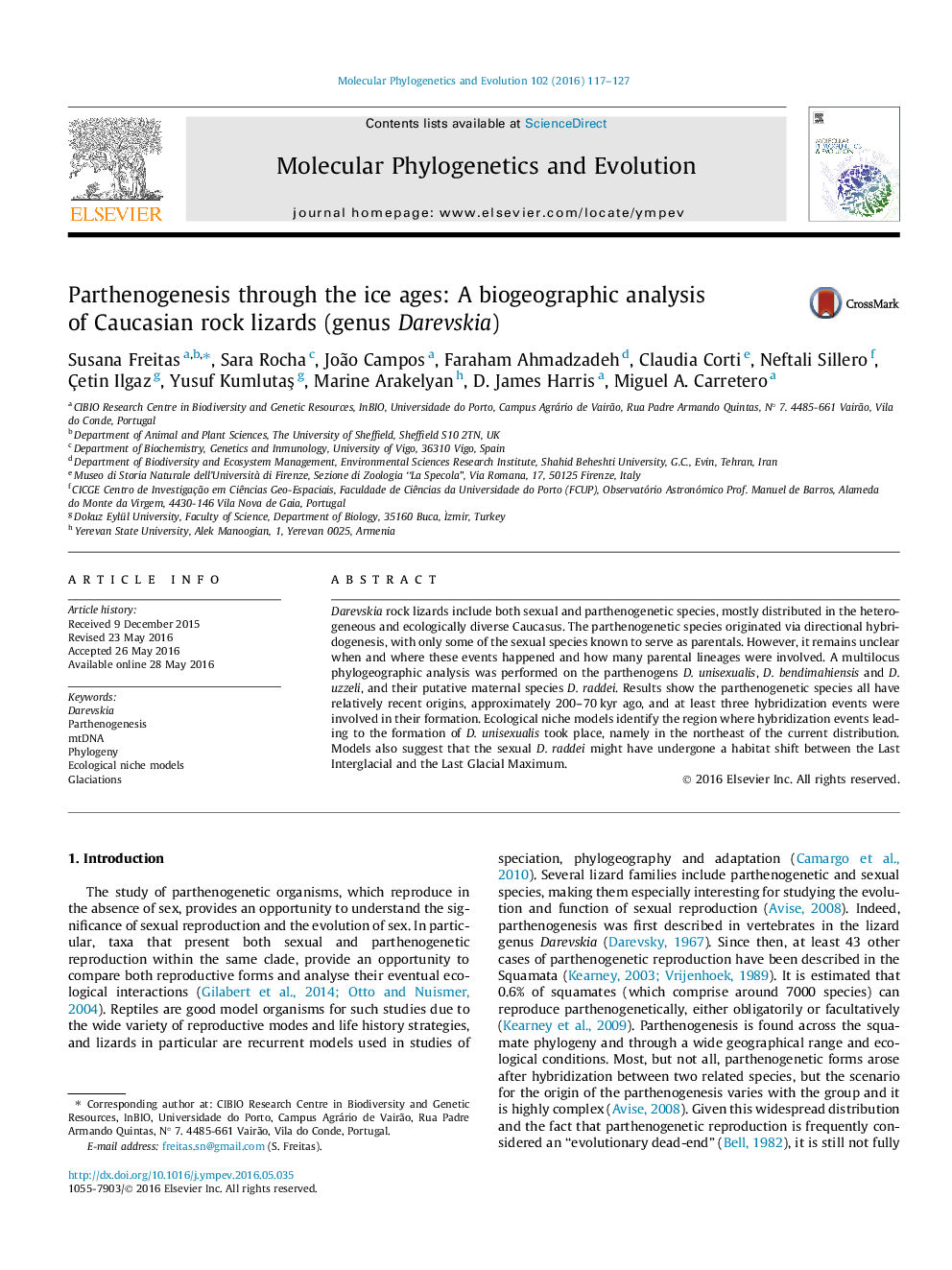| Article ID | Journal | Published Year | Pages | File Type |
|---|---|---|---|---|
| 5918467 | Molecular Phylogenetics and Evolution | 2016 | 11 Pages |
â¢D. raddei has a complex refugia-within-refugia pattern of evolution in the Caucasus.â¢Hybrid origin of the Darevskia parthenogens is confirmed with nuclear and mtDNA.â¢The origin of parthenogens is dated to the last Glaciation.
Darevskia rock lizards include both sexual and parthenogenetic species, mostly distributed in the heterogeneous and ecologically diverse Caucasus. The parthenogenetic species originated via directional hybridogenesis, with only some of the sexual species known to serve as parentals. However, it remains unclear when and where these events happened and how many parental lineages were involved. A multilocus phylogeographic analysis was performed on the parthenogens D. unisexualis, D. bendimahiensis and D. uzzeli, and their putative maternal species D. raddei. Results show the parthenogenetic species all have relatively recent origins, approximately 200-70Â kyr ago, and at least three hybridization events were involved in their formation. Ecological niche models identify the region where hybridization events leading to the formation of D. unisexualis took place, namely in the northeast of the current distribution. Models also suggest that the sexual D. raddei might have undergone a habitat shift between the Last Interglacial and the Last Glacial Maximum.
Graphical abstractDownload full-size image
